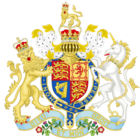Petroleum Act 1868 facts for kids
| Act of Parliament | |

|
|
| Long title | An Act to amend the Act Twenty-fifth and Twenty-sixth Victoria, Chapter Sixty-six, for the safe keeping of Petroleum. |
|---|---|
| Citation | 31 & 32 Vict. c. 56 |
| Territorial extent | England, Wales, and Scotland |
| Dates | |
| Royal assent | 13 July 1868 |
| Commencement | 1 February 1869 |
| Repealed | 21 August 1871 |
| Other legislation | |
| Amends | Petroleum Act 1862 |
| Repealed by | Petroleum Act 1871, s 17 & Sch 2 |
|
Status: Repealed
|
|
The Petroleum Act 1868 was an important law made by the Parliament of the United Kingdom. It updated an earlier law from 1862. This Act focused on how petroleum (like oil) was stored, sold, and handled safely. It was created to make sure petroleum products were kept and used without causing fires.
Contents
Why Was This Law Needed?
The first law about petroleum, the Petroleum Act 1862, had some problems. It wasn't working as well as people hoped. In 1867, a special group in Parliament was formed. This group looked into how to protect people and buildings from fires across the United Kingdom.
They wanted to find out what caused fires and how to stop them. During their research, they learned that the 1862 law wasn't really helping. So, one of their main suggestions was to fix the old law. The Petroleum Act of 1868 was created to make these important changes.
Key Dates for the 1868 Act
The Petroleum Act 1868 officially became a law on July 13, 1868. This is called receiving royal assent. The rules in the Act started to be used on February 1, 1869.
Important Rules of the Act
The 1868 Act included several key rules to improve safety.
Storing Petroleum Safely
You couldn't keep petroleum, except for your own personal use, within 50 yards (about 45 meters) of a house or a building where goods were stored. To do so, you needed a special permit from a local authority. This permit could include conditions. These conditions might cover how petroleum was stored. They could also specify what kind of goods could be stored nearby. Rules for testing petroleum were also part of the permit.
If someone broke this rule, their petroleum could be taken away. They also faced a fine of £20 for each day they broke the law. This was a lot of money back then!
Selling Petroleum for Lights
The Act also had rules for selling petroleum used for lamps and lighting. After February 1, 1869, it became illegal to sell petroleum that caught fire easily below 100°F (about 38°C).
If the petroleum did catch fire below 100°F, its container needed a special label. This label had to warn people: "Great care must be taken in bringing any light near to the contents of this vessel, as they give off an inflammable vapour at a temperature of less than 100 degrees Fahrenheit." Breaking this rule meant a fine of £5.
How Rules Were Enforced
Any problems or offenses against these rules were handled by local judges, called magistrates.
Testing Petroleum
Inspectors who checked weights and measures were given the power to test petroleum. The Act even described a specific way to test it.
What is Petroleum?
The Act defined petroleum as "any oily substance that gives off a flammable vapor at a temperature of less than 100 °F." This helped everyone understand what the law applied to.
What Happened Next?
The Petroleum Acts of 1862 and 1868 were later replaced. A new law, the Petroleum Act 1871, took their place. However, some of the important safety rules from the 1868 Act were kept. For example, the rule about putting a warning label on petroleum containers continued in the 1871 Act.
See also
- History of fire safety legislation in the United Kingdom
- Petroleum Acts

